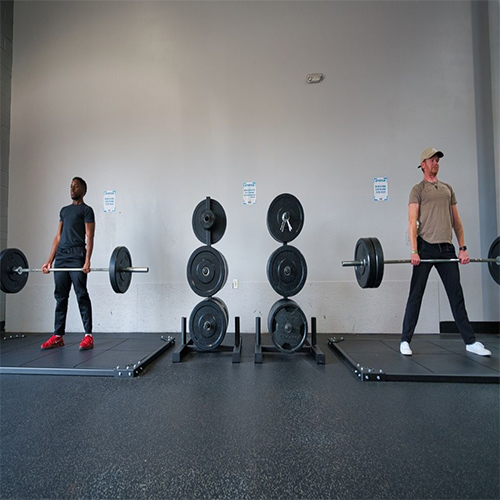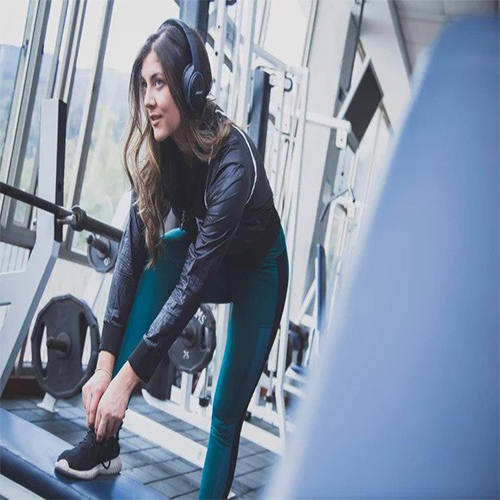Undoubtedly, everyone’s New Year’s resolution is “new year, new me.” People go to the gym to work toward their goals of having fit, intelligent bodies that are toned. But in actuality, your gym, the setting, and the people working out there with vigour and enthusiasm can make you feel uneasy and a touch intimidating. Getting the body of your dreams requires overcoming these challenges and initial apprehensions.
Success lies outside of your comfort zone, as they say. We’ve gathered some strong advice to help you feel more comfortable in the gym and get your kick-ass ready for it. By imitating them, you can not only break down structural barriers and carve out your niche but also truly feel as though you belong in that setting.
The following are some guidelines you might use to master the gym:
1:Get up and have a cup of coffee before working out in the morning.
You’ll have a little additional energy in your indoor cycling or boot camp session thanks to the caffeine in a pre-workout cup of joe that helps boost your central nervous system. Additionally, research demonstrates that it might actually make exercise feel more fun, which increases your likelihood of exerting more effort in addition to improving performance.
2: Make friends with the front desk personnel.
Try to make friends with the front desk workers by giving them a warm welcome and smiling at them. By becoming their friends, you will not only feel welcome when they greet you warmly each time you enter the gym, but you will also find it much easier to complain to them about any broken or in need of replacement gym equipment.

3: Put on your preferred gym attire.
Unquestionably, wearing comfortable gym attire and feeling cheerful and confident may give you a fresh, upbeat sense of optimism and help you work harder to reach your goals. To increase your energy and morale, it is strongly advised to wear colourful, brilliant, and lively colours.

4:Concentrate On Exercise You Enjoy.
Please choose your favourite exercise and become an expert at it as another way to become comfortable with your gym’s surroundings. You’ll gain more than just self-assurance and confidence; you’ll also receive something that will support and benefit your fellow gym goers. In addition, when you enjoy what you are doing, it is easier to get to the gym on time and feel more self-assured.

5:Create a Plan.
You can quickly maximize your gym time by preparing a workout schedule. You’ll not only feel more inspired as a result, but you’ll also be able to perform the exercises flawlessly because you’ll be aware of their exact order.

6: High Volume Times.
To avoid being caught off guard, be well aware of when your gym experiences excessive traffic. The busiest times for gyms are typically before 10 am and after 5 pm. Call your gym and inquire about their off-peak hours if you get nervous working out in such a crowded environment. By doing this, you’ll be able to exercise in the gym when it’s less busy and use the equipment without waiting for it to become available.

7:The beginning and end of your session.
Setting a start and end time for your training session can help you focus and pay attention to your workout rather than idly using the elliptical and observing others play their game. With the reassurance that you will soon return to your little heaven, these established boundaries will inspire, motivate, and prompt you to depart in the first place.

8: Make a gym partner.
Try joining the gym with your significant other or finding a new gym buddy to make exercising enjoyable. Try some of the gym’s group fitness classes to meet people there. The discomfort, distress, and uneasiness you experience each time you walk into a room full of strangers will be reduced as a result of doing this.

9: With a plan in mind, enter the gym.
You can avoid roaming about aimlessly as you consider your next move by having a plan of action before you enter the gym. Because you’re letting your heart rate fall, this hesitancy lengthens your workout and reduces its effectiveness. Studio 26 founder Jared Kaplan told SELF that having a clear plan is your secret weapon. Be aware of the movements you’ll perform, where you’ll achieve them, and what sequence you’ll use.
It’s also a good idea to have a backup plan if the equipment or space on the floor you had in mind is already taken. Continually move through your workout, pausing only when necessary, or have a backup routine prepared that makes use of alternative apparatus.

10: A great exercise playlist can inspire you.
Songs that give you a sense of strength and power can help you stay motivated while working out and on your way to the gym. If you’ve been using the same earbuds for a long, consider upgrading your sound and comfort with one of these four top exercise headphones that SELF staffers sweat-tested as part of our annual Healthy Living Awards program.

11: Dynamic stretches should be performed before your workout.
A crucial part of virtually every warm-up is dynamic stretching. Instead of holding the stretch in place, you’ll move through several periods as you stretch dynamically. Your body temperature, heart rate, and muscles start to warm up, as a result, preparing your body for exercise. To fully benefit from each exercise’s strengthening effects, you should be able to move more freely after a dynamic warm-up. Depending on the kind of exercise you’ll be doing, you should warm up with specific stretches: Try this active warm-up before a strength training session or this 5-minute warm-up before you run.

12: Minimize pause periods between exercises to make the most of your gym time.
Short on time to get to the gym? Reduce the length of your breaks. Your workout will instantly get more intense, and you’ll maintain an elevated heart rate throughout your weightlifting or interval training session if you take little to no breaks. According to Bandana Training founder Rob Slaver, C.S.C.S., this cardio challenge teaches your body (and mind) to function well and persevere despite exhaustion. Regular cardiovascular exercise improves your body’s ability to transport oxygen-rich blood to your working muscles, making it easier for you to continue exercising even when you’re exhausted.
According to the workout and the individual, the ideal amount of recovery varies. Still, as a general rule, you should try to take just enough to allow you to push yourself during your next set without completely recovering. Just a warning: If you already experience this during your strength exercises, you might not want to reduce your rest intervals because too little rest won’t allow your muscles to recover sufficiently to be ready for your next strength session.

13:Use complex actions to engage several muscles at once.
Compound exercises work two or more joints and several muscle groups simultaneously. In contrast, isolated workouts only work one muscle group (like bicep curls). They’re terrific for boosting total muscle mass since they enable you to accomplish more in less time, and because they increase your need for energy, they also increase your calorie expenditure. Compound exercises can be a single movement that works for several different muscle groups at once (such as lunges and squats), or they can be a combination of two movements (like bicep curls to shoulder presses).
Compound motions should make up 70 to 80 per cent of your workout in order to get the most out of the time you spend in the gym (and target specific muscles you want to work with isolation exercises the rest of the time)
14:Choose the proper weight.
Which weight should I use? is one of the most frequent queries experienced by new gym users. You can test your muscles just enough to make them stronger by using a weight that is heavy enough but not too heavy. Even if lifting a weight that is too light will still have some positive effects on your health, your strength and level of fitness won’t increase.
Trial and error may be necessary to select the proper weight. Generally speaking, you want a weight where you can complete every rep in your final set of exercises, but feel particularly challenged on the final two or three reps. It’s time to add more weight if you had no trouble finishing the last set. Change to a smaller weight if you can’t complete all the reps in a set.
15:Adopt a strength-training mindset.
Now is the perfect moment to learn about strength training if you’ve previously avoided the gym. Whether you’re lifting a moving box or climbing stairs, having strong muscles can help you avoid injuries and move more easily throughout the day. Additionally, strength training increases bone density, which is crucial for avoiding fractures and osteoporosis. Additionally, it guards against the normal loss of muscle mass that comes with ageing, which keeps your metabolism in top form. In addition, research demonstrates that strength training, which lowers blood pressure and raises cholesterol levels, has heart-health benefits in addition to those that you generally identify with cardiovascular activity.


